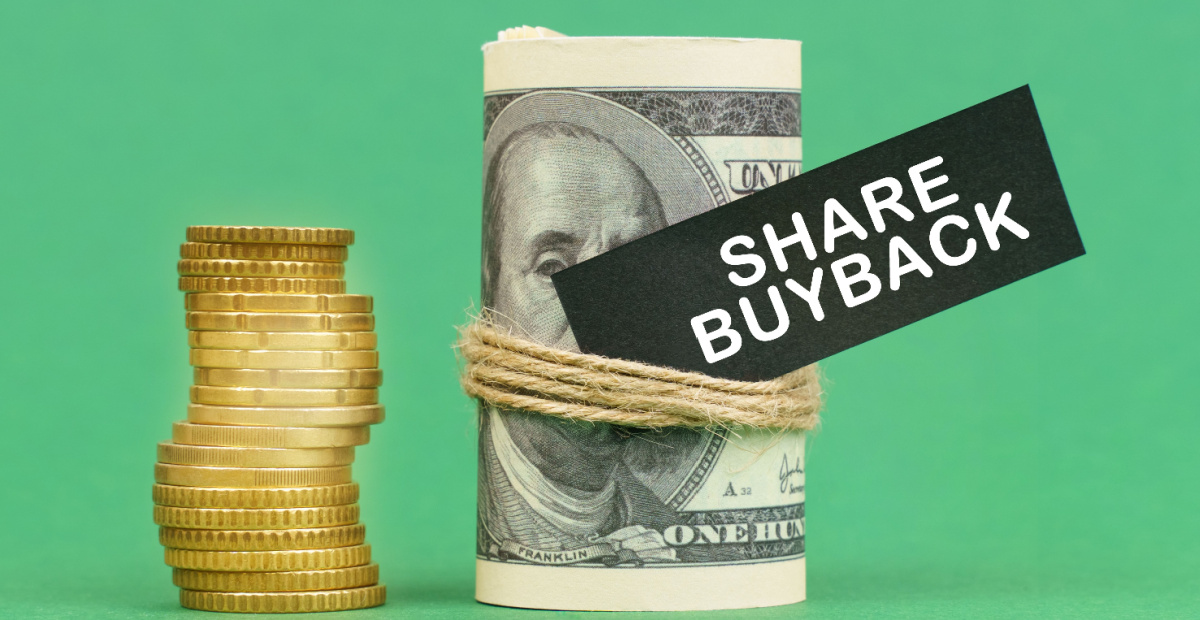Share buybacks drop again despite global dividend record

While global dividends grew to a new record in 2023, listed companies spent far less buying back their own shares, according to new data from Janus Henderson.
Globally, share buybacks by publicly listed companies totalled $1.11 trillion in 2023, a $181 billion decline on the previous year – representing a 14% year-on-year decline, according to the annual study by Janus Henderson, as part of the global investment firm’s quarterly Global Dividend Index.
US companies stood out as the biggest buyers of their own shares, accounting for $7 in every $10 globally – or $773 billion in total.
However, listed companies in the US were also found to have made a disproportionately large reduction in their buyback programs; US buybacks fell by $159 billion last year, down by 17% year-on-year.
The data showed that US technology companies cut back the most, spending $69 billion less than the previous year. Among these, Microsoft and Meta reduced buybacks by almost one-third, while Apple dropped by one-seventh.
Despite the buyback withdrawal in the US, the value of buybacks was 1.2x larger than the value of dividends paid by US companies.
The data found that listed companies in Asia Pacific ex-Japan are the least likely to conduct buyback programs.
The region saw a more than 40% year-on-year reduction in buybacks, primarily reflecting lower share buybacks among Australia’s large banks. This regional drop, according to the study, more than offset increases in Hong Kong and South Korea buyback programs.
Meanwhile, UK companies were the biggest buyers of their own shares outside of the US, accounting for $1 in every $17 of the global total in 2023. Purchases of $64.2 billion were just 2.6% lower year-on-year and equalled 75% of dividends paid.
In Europe, buybacks across the region rose by 2.9% to $146 billion in 2023 (compared to a 20% underlying increase in dividends for the same period).
At a sector level, technology, healthcare, and financials saw the biggest reductions in buybacks, with the largest impact seen amongst US companies.
Despite the drop in the US, healthcare companies elsewhere increased their buybacks. Globally, telecoms, banks and vehicles companies made the most significant increases.
Buybacks, however, were found to be highly concentrated. While just over half the companies in Janus Henderson’s index of 1,200 companies repurchased shares in 2023, just 45 of these accounted for half the annual total spent on buying back shares globally.
Buybacks as a ‘release valve’
Buybacks, like dividends, are used by listed companies to return profits to their investors. By buying back its own stock using its own capital, companies can reduce the number of shares outstanding and thereby increase the value of remaining shares.
According to Ben Lofthouse, head of global equity income at Janus Henderson, buybacks are frequently employed by public companies as a capital “release valve” – “a way of returning excess capital to shareholders without setting expectations for dividends that might not be sustainable long term”.
“That flexibility explains why buybacks are more volatile than dividends. It also means there is no real evidence that buybacks are taking over from dividends.”
Lofthouse added that “higher interest rates have played a role in the decline of share buybacks – when debt is cheap it makes sense for companies to borrow more (as long as they borrow prudently) and use the proceeds to retire expensive equity capital.
“With rates at multi-year highs, that calculation is more nuanced; some companies are paying down debt at this point in the cycle, using cash that might otherwise have gone to buybacks, but very few are cutting dividends as our forthcoming Global Dividend Index will show.”











Govts disastrous failures. 20 years of morons in Canberra and look at the results. Housing & Fin Advice two very…
The PHD in economics is the scariest. How many academics actually understand the real world
Money is leaving at a slower rate with this being considered by AMP management as a positive. Australia's Money Pit…
"Our recently launched digital advice solution for AMP Super members is providing simple, intuitive retirement advice at no extra cost.”…
Assistant to Bill Shorten...FoFA, A time when dozens of submissions were made, 90 odd submissions ranging from clients be sent…